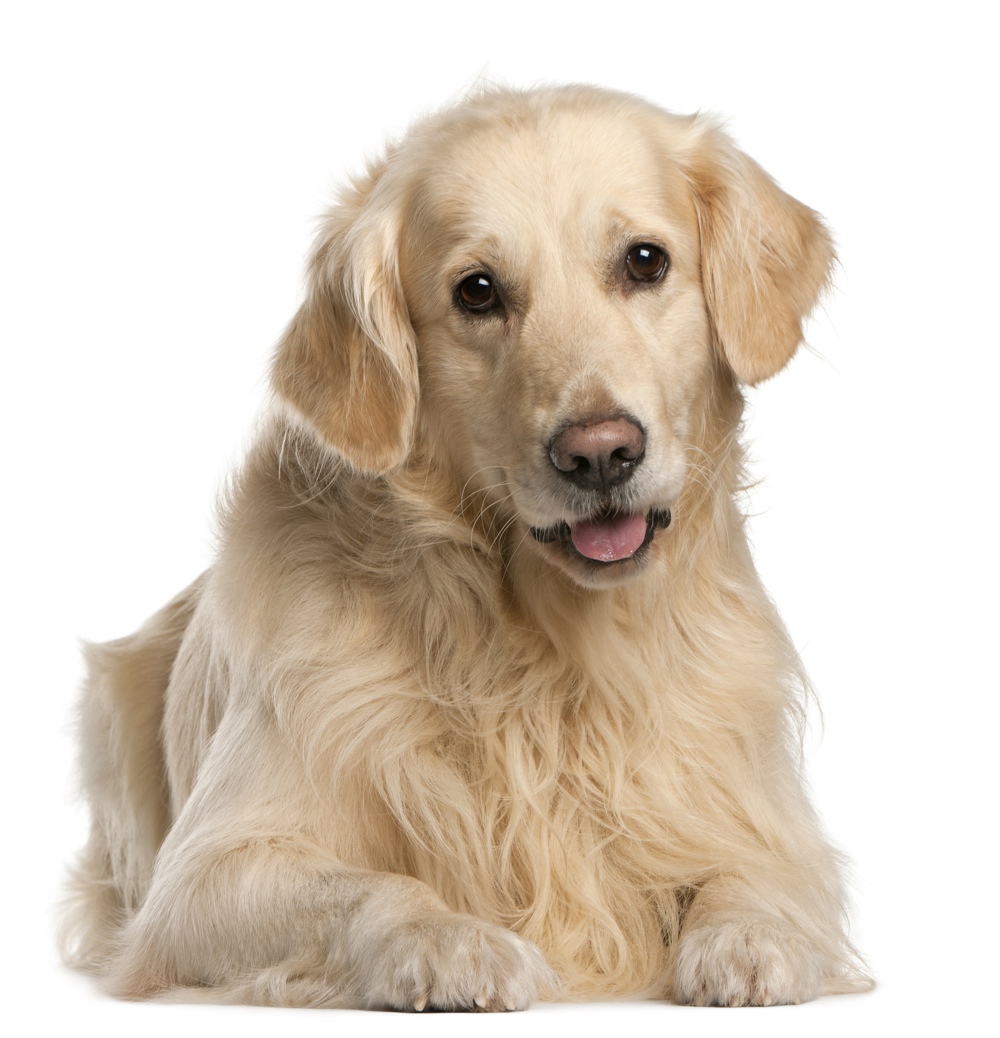
What is thyroid carcinoma?
Thyroid neoplasia is probably more common in dogs than in almost any other species. Thyroid tumors account for approximately 1 to 4 % of all canine neoplasms. Thyroid tumors account for 10% to 15% of canine tumors of the head and neck. While thyroid carcinomas have been reported in virtually every canine breed, Beagles, Boxers and Golden Retrievers are at an increased risk when compared to other breeds.
Etiology
More than 90% of all detected canine thyroid tumors are carcinomas. Approximately 85% of thyroid carcinomas in dogs are of a compact or follicular (differentiated) type. Approximately 15% or less are anaplastic (undifferentiated). Less than 5% of thyroid carcinomas in dogs originate from the parafollicular or C-cells. The C-cells of the thyroid produce calcitonin, a hormone important in calcium homeostasis. Tumors of the C-cells are called medullary thyroid carcinomas. Most dogs with thyroid tumors are euthyroid (have normal thyroid hormone levels) because thyroid tumors uncommonly produce excessive thyroid hormone levels. Only approximately 5% of dogs with thyroid carcinomas demonstrate a clinical thyrotoxicosis (elevated thyroid hormone levels). The thyroid tumors in these dogs demonstrate a markedly increased iodine uptake needed to support their increased thyroid hormone production. Despite the absence of a circulating thyrotoxicosis, differentiated thyroid carcinomas in the dog are usually capable of concentrating iodine.
Clinical Signs
The common clinical signs demonstrated by dogs with thyroid carcinomas include:
- A visible mass in the neck
- Coughing
- Dyspnea (difficulty breathing)
- Dysphagia (difficulty swallowing)
- Dysphonia (change in bark)
A smaller number of dogs with thyroid carcinomas demonstrate weight loss, vomiting/regurgitation, listless and anorexia (decreased appetite). The most common clinical signs demonstrated by dogs with thyrotoxicosis secondary to thyroid carcinoma are polyuria (increased urination) and polydipsia (increased water consumption).
Diagnosis
The diagnosis of thyroid neoplasia in most cases is based on a cytologic or histopathologic evaluation of tissue samples collected from the mass. Cytologic evaluation is usually capable of determining the source as thyroid tissue. However cytologic evaluation is frequently limited in its ability to accurately differentiate a benign thyroid adenoma from a well differentiated thyroid carcinoma. In these cases, histopathologic evaluation of a tissue sample is necessary to confirm a malignancy. Excisional biopsy samples typically provide the best opportunity to evaluate for capsular or vascular invasion as important criteria of malignancy as well as important factors in treatment planning. In the small percentage of dogs who develop a thyrotoxicosis secondary to a differentiated thyroid neoplasia, diagnosis can be aided by measurement of circulating thyroid hormone levels. Planar thyroid scintigraphy (or thyroid scanning) is a well established diagnostic aid in the evaluation of dogs with thyroid carcinoma. Technetium pertechnetate is concentrated by thyroid tissue, salivary glands and gastric mucosa (stomach). Technetium pertechnetate is concentrated in thyroid tissue by the same mechanism as iodine. By evaluating the uptake of technetium pertechnetate on a thyroid scintigraphy it is possible to better define the nature and extent of thyroid neoplasia. Thyroid scintigraphy is an important step in the staging of the canine patient with differentiated thyroid neoplasia. Thyroid scintigraphy utilizing technetium pertechnetate can also be used as a predictor of radioiodine uptake..
Therapy
Most veterinary literature describes the use of surgery or surgery combined with chemotherapy for the treatment of thyroid carcinoma. Surgery is a very important part of the therapy for differentiated thyroid carcinoma. Surgery allows confirmation of a histopathologic (biopsy) diagnosis and potentially accomplishes significant reduction in tumor size. Unfortunately more than 50% of dogs with thyroid carcinoma have detectable metastasis at the time of diagnosis. This prevents a surgical cure for these patients. Currently available chemotherapy for canine thyroid carcinoma has been disappointing.
Radioactive iodine (131I) therapy is the most commonly utilized adjuvant therapy for thyroid carcinoma in man. The basis for radioiodine therapy is the unique ability of thyroid cells to concentrate iodine. This capability allows differentiated thyroid carcinoma cells to preferentially concentrate radioactive iodine administered to dogs with persistent disease following surgical debulking. Because the radioiodine is only concentrated by thyroid cells, the remainder of the dog’s body is spared the effects of the radiation. Recent experience and numerous scientific articles suggest a good response to radioiodine therapy for differentiated thyroid carcinoma in the dog. The median survival following radioiodine therapy for surgically unresected, thyroid carcinoma in the dog has been reported by several studies to range between 24-28 months. Median survivals for dogs with distant metastasis (stage IV) were lower than dogs without metastasis (stage II-III). Dogs with functional thyroid tumors causing thyrotoxicosis and dogs with previous successful surgical debulking are often cured of their disease following radioiodine therapy. The benefits of radioiodine therapy are maximized by the use of careful patient screening with thyroid scintigraphy to ensure adequate radioiodine uptake by the tumor. Additional benefits are obtained by surgical debulking of the tumor and the use of an iodine restricted diet prior to radioiodine administration. An iodine restricted diet ensures maximal radioiodine uptake by the iodine deprived differentiated thyroid carcinoma cells. Regulatory requirements require the hospitalization of dogs treated with radioiodine for variable periods depending on the individual dose administered as well as patient excretion rates.

